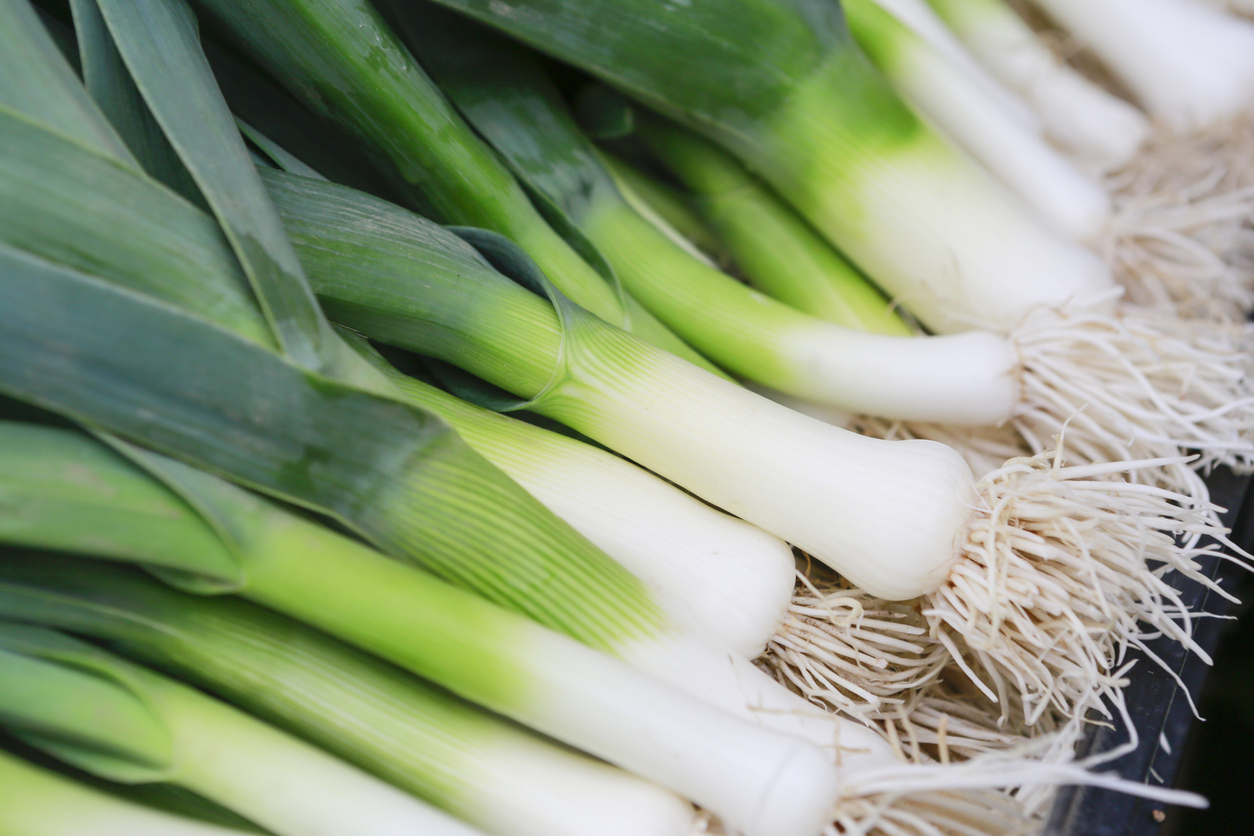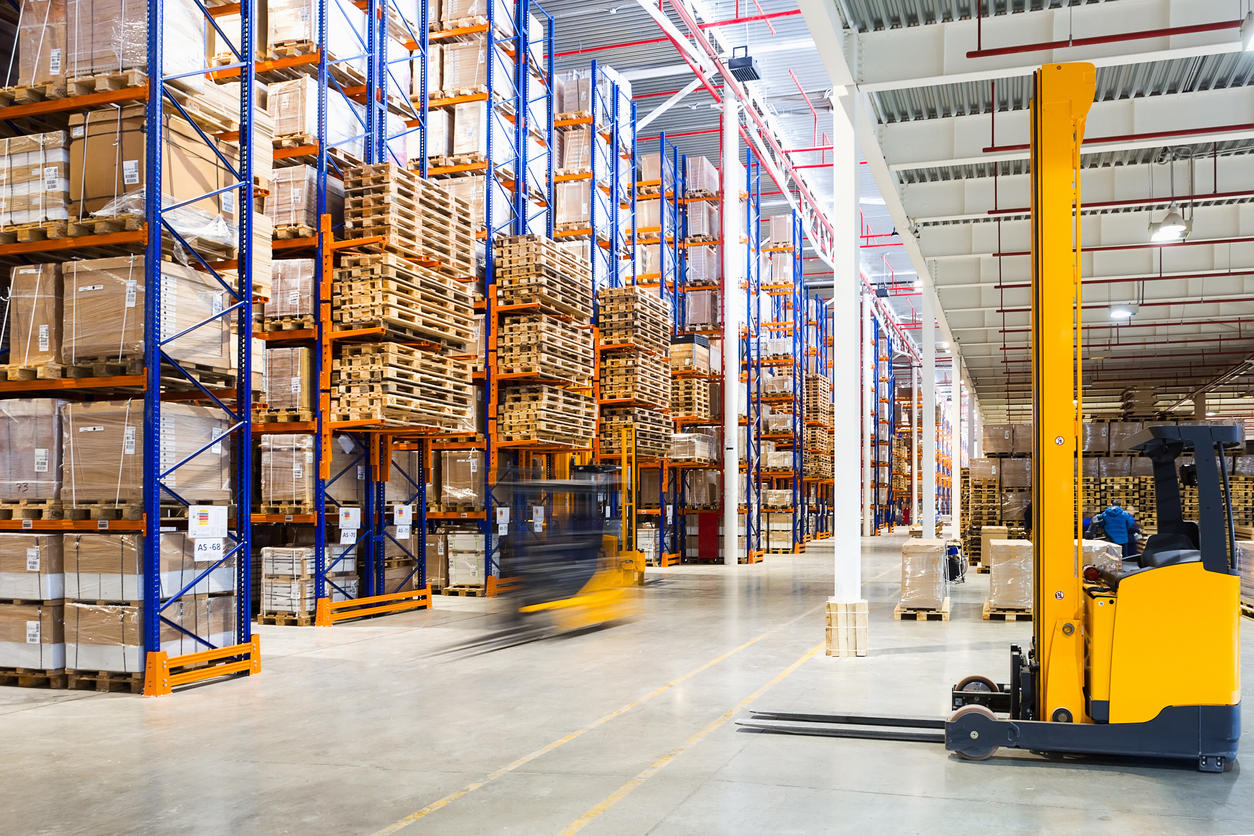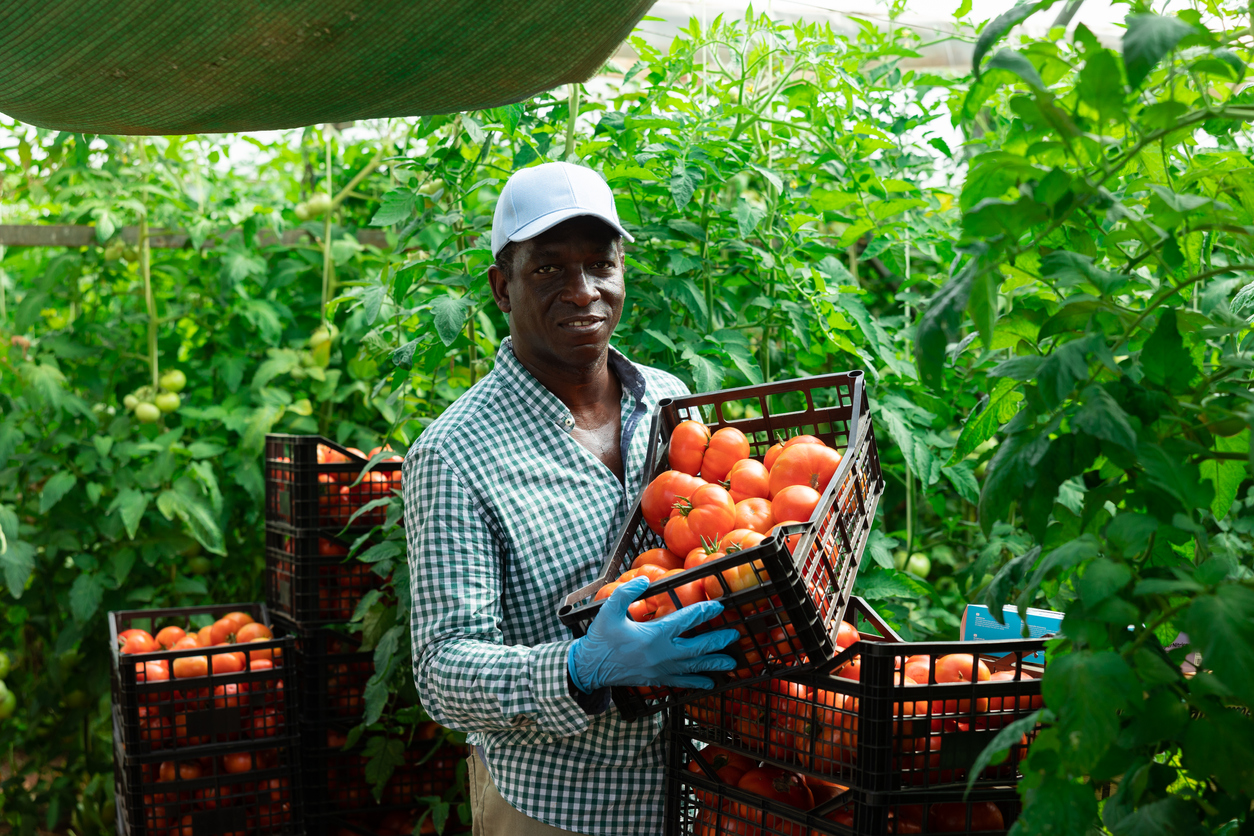Understanding the Fluctuating Leek Prices: Factors Influencing the Market
Understanding the Fluctuating Leek Prices: Factors Influencing the Market
Are you a fan of leeks? Well, brace yourself for some exciting insights into the world of leek prices! Whether you’re a dedicated chef or simply love adding this versatile vegetable to your favorite dishes, understanding the factors that influence market fluctuations is crucial. In this blog post, we’ll delve into the mysterious realm of leek pricing, uncovering key elements like supply and demand, weather conditions, and even global trade dynamics. Get ready to unlock the secrets behind those fluctuating leek prices and become an expert in predicting trends – so you can enjoy your beloved leeks without breaking the bank!
Introduction: The rise and fall of leek prices
Introduction: The rise and fall of leek prices
Leeks have been a popular vegetable for centuries, with their mild onion-like flavor making them a versatile ingredient in various cuisines. However, the prices of this humble vegetable can fluctuate greatly, causing both consumers and producers to be affected. In this section, we will delve into the reasons behind the rise and fall of leek prices and how it impacts the market.
Historical trends:
To understand the current leek market, it is important to look at its historical trends. Leeks were first cultivated in ancient Egypt and Greece, where they were highly valued for their medicinal properties. Over time, they spread throughout Europe and eventually made their way to North America during the 17th century.
In earlier times, leeks were considered a luxury food item due to their limited availability and high demand. As a result, they were mostly consumed by royalty and wealthy individuals. However, with advancements in farming techniques and transportation systems, leeks became more accessible to the general public in the 19th century.
Factors influencing leek prices:
1. Seasonal availability:
Like most vegetables, leeks have a specific growing season which affects their availability in the market. Typically grown from September to May in temperate regions, leeks are harvested during winter months when there is less competition from other vegetables. This limited supply during these months can cause an increase in price.
What is a Leek?
Leeks are a type of vegetable that belong to the same family as onions, garlic, and shallots. They have long green stalks and white bulbs, giving them a distinct appearance from other vegetables. Leeks have been cultivated for thousands of years and have been an important part of many cuisines around the world.
One of the main characteristics of leeks is their mild onion-like flavor. Unlike regular onions, leeks are not as pungent and have a sweeter taste. This makes them a versatile ingredient in cooking, as they can be used in both savory and sweet dishes. In addition to their unique flavor, leeks also offer various health benefits. They are high in fiber, vitamins A and K, and antioxidants.
Leek plants grow best in cool climates with plenty of moisture in the soil. They are typically harvested between late summer to early winter when they reach maturity. The growing season for leeks can vary depending on the region, which can affect their availability and prices throughout the year.
When it comes to purchasing leeks at the market, there are some important factors that influence their fluctuating prices. One major factor is supply and demand – when there is an abundant supply of leeks available, prices tend to be lower due to competition among sellers. On the other hand, if there is a shortage or high demand for leeks, prices may increase.
Factors that Influence Leek Prices:
Leeks are a popular vegetable that is valued for its unique flavor and health benefits. However, like any other commodity, the prices of leeks can fluctuate significantly due to various factors. In this section, we will discuss some of the key factors that influence leek prices in the market.
1. Supply and Demand: One of the most significant factors that affect leek prices is supply and demand. As with any crop, the availability of leeks in the market plays a crucial role in determining its price. When there is an abundant supply of leeks, the prices tend to be lower as farmers need to sell off their produce quickly before it spoils. On the other hand, when there is a shortage of leeks due to weather conditions or other reasons, prices tend to rise as consumers are willing to pay more for this sought-after vegetable.
2. Seasonality: The seasonality of leeks also has a significant impact on their pricing. Leeks are typically available all year round, but they have peak seasons during spring and fall when they are at their freshest and most abundant. During these times, you can expect lower prices compared to off-seasons where production may be limited due to unfavorable weather conditions or pest infestation.
– Seasonal Changes
Seasonal changes play a significant role in the fluctuation of leek prices. As with most produce, the availability and demand for leeks are heavily influenced by the changing seasons.
In general, leeks are considered a cool-season crop that thrives in moderate temperatures. They are typically planted in late summer or early fall and harvested from late fall to early spring. This means that during these months, there is an abundance of fresh, locally grown leeks available on the market.
During the peak season, when there is an abundance of leeks available, prices tend to be lower due to the high supply. However, as we move into spring and summer months, the availability of fresh leeks decreases, resulting in higher prices.
Another factor that affects seasonal changes in leek prices is weather conditions. Leeks prefer cool temperatures and consistent moisture levels. If there is a sudden change in weather patterns such as extreme heat or heavy rainfalls, it can affect their growth and quality. This can lead to a decrease in supply and cause prices to rise.
Furthermore, seasonal changes also impact consumer demand for leeks. In colder months, consumers may be more inclined to purchase hearty soups and stews that often include this versatile vegetable as an ingredient. On the other hand, during warmer months when people tend to gravitate towards lighter meals and salads, demand for leeks may decrease.
– Supply and Demand
Supply and demand is a fundamental concept in the world of economics that plays a crucial role in determining the prices of goods and services. In simple terms, supply refers to the quantity of a product or service that is available in the market, while demand refers to the desire or need for that product or service by consumers. The interaction between these two forces can greatly influence the price of any given commodity, including leeks.
In the case of leeks, there are several factors that affect both supply and demand, leading to fluctuations in their prices. Let’s take a closer look at each one:
1) Seasonality: Leeks are highly seasonal vegetables, with most varieties being harvested during the fall and winter months. This means that their availability is limited during other times of the year, leading to higher prices when demand remains constant. During peak seasons, when leeks are abundant, their prices tend to be lower due to an increase in supply.
2) Weather conditions: Like many other crops, leek production is heavily dependent on weather conditions such as temperature and rainfall. Extreme weather events like droughts or floods can significantly reduce crop yields and therefore decrease supply. This scarcity can cause a spike in prices as suppliers struggle to meet consumer demand.
3) Production costs: The cost of producing leeks also plays a significant role in determining their market price. Factors such as labor wages, fuel expenses for transportation and equipment maintenance all contribute to production costs which ultimately reflect on consumer pricing.
– Weather Conditions
Weather conditions play a crucial role in the fluctuation of leek prices. Leeks are a cool-season crop and require specific weather conditions to thrive and produce high-quality yields. Any extreme or unfavorable weather can significantly impact the supply and demand of leeks, leading to fluctuations in its market prices.
One of the primary factors affecting leek production is temperature. Leeks grow best in moderate temperatures ranging from 50-70°F (10-21°C). Any sudden changes in temperature, such as heatwaves or frost, can damage the plants, resulting in reduced yield and quality. This can lead to a decrease in supply, causing an increase in prices.
Similarly, precipitation also plays a significant role in leek production. While these vegetables require consistent moisture throughout their growing season, excessive rainfall or drought can have adverse effects on their growth. Heavy rains can cause waterlogging and create favorable conditions for diseases like root rot, which can significantly affect leek production. On the other hand, prolonged dry periods can stunt plant growth and reduce yields, ultimately impacting market prices.
Wind is another weather condition that impacts leek production but often goes unnoticed. Strong winds can uproot young plants or break off mature leaves, reducing both quantity and quality of harvested leeks. Windy weather also increases evaporation rates, leading to soil dryness that affects plant growth.
– Production Costs
Production costs are a major factor in determining the price of leeks in the market. These costs play a crucial role in shaping the supply and demand dynamics, ultimately affecting the final retail price for consumers. In this section, we will delve deeper into the various production costs involved in growing leeks and how they contribute to the fluctuating prices.
1. Labor Costs:
The first and most significant production cost for leeks is labor. The process of cultivating leeks requires manual labor from planting to harvesting. This involves tasks such as tilling the soil, sowing seeds or transplanting seedlings, watering, weeding, and harvesting. The amount of labor needed varies depending on factors such as farm size, availability of skilled workers, and seasonality. With increasing minimum wages and scarcity of farm laborers in some regions, labor costs have risen significantly over recent years.
2. Land Costs:
Another important production cost for leeks is land rental or purchase fees. Leek farmers need suitable land with proper drainage systems to grow their crops successfully. As urbanization continues to encroach on farmland, the competition for available land has intensified, driving up prices significantly.
3. Seed Costs:
Leek seeds are not expensive compared to other vegetable seeds; however, they still contribute to overall production costs. Farmers must purchase high-quality seeds that can withstand various weather conditions and produce healthy plants with good yields.
– Global Trad
Global trade plays a significant role in the fluctuation of leek prices. Leeks are a popular vegetable that is traded globally, and any changes or disruptions in the global market can have a direct impact on its price.
One of the major factors that influence global trade of leeks is import and export policies. Countries with strict import regulations may limit the supply of leeks, leading to an increase in demand for locally grown ones. This, in turn, can drive up prices as consumers are willing to pay more for this sought-after vegetable.
Another factor that affects global trade is weather conditions. As leeks are mainly grown outdoors, extreme weather events such as droughts, floods or frost can damage crops and reduce yields. This causes a shortage of supply in both local and international markets, resulting in higher prices.
The transportation costs associated with importing and exporting leeks also play a crucial role in their pricing. When fuel prices rise, so do transportation costs, making it more expensive for countries to import or export leeks. This ultimately leads to an increase in prices for consumers.
Political stability is another important factor influencing global trade and thus affecting leek prices. Any political turmoil or instability in countries where leeks are produced can disrupt supply chains and cause delays or even cancellations of shipments. These uncertainties can cause fluctuations in prices due to changes in supply availability.
Impact on Farmers and Consumers
The fluctuating prices of leeks not only affect the farmers who grow them, but also have an impact on consumers who rely on this vegetable for their daily meals. In this section, we will discuss in detail how the changing leek prices influence both farmers and consumers.
1. Impact on Farmers:
Leeks are a major source of income for many farmers around the world. The price fluctuations in the market can have a significant impact on their livelihoods. When leek prices are high, it can be beneficial for farmers as they can earn more profit from their crops. However, when prices drop, it can lead to financial struggles for these farmers.
One of the main factors that influence leek prices is weather conditions. Extreme weather events such as droughts or floods can damage crops and reduce yields, leading to a decrease in supply and an increase in prices. This puts additional pressure on farmers who may already be struggling with other production costs.
Moreover, changes in consumer preferences can also affect leek prices. For example, if there is a sudden increase in demand for organic leeks or a shift towards locally grown produce, it may require additional investments from farmers to meet these demands and maintain competitive pricing.
Another factor that impacts leek prices is international trade policies and agreements. Countries that heavily rely on importing or exporting leeks may experience fluctuations due to changes in tariffs or quotas imposed by governments.
Predicting Future Prices
Predicting future prices is a crucial aspect of understanding the fluctuating leek market. It involves analyzing current trends and factors that may impact the price of leeks in the future. While it is impossible to accurately predict prices with 100% certainty, there are certain methods and techniques that can help in making informed predictions.
One important factor to consider when predicting future prices is the supply and demand dynamics of the leek market. If there is a high demand for leeks but a limited supply, it is likely that prices will increase in the future. On the other hand, if there is an oversupply of leeks, prices are expected to decrease.
Another factor to consider is weather conditions. Leeks are sensitive to extreme temperatures and adverse weather events such as floods or droughts can greatly impact their growth and availability in the market. For example, excessive rainfall may result in poor quality or damaged crops, leading to higher prices due to reduced supply.
Political and economic factors also play a significant role in predicting future leek prices. Changes in government policies related to agriculture subsidies or trade agreements can have an impact on production costs and ultimately affect retail prices. Economic fluctuations such as inflation rates, currency exchange rates, and consumer spending habits can also influence leek prices.
Alternative Options for Consumers
There are a few alternative options for consumers to consider when faced with fluctuating leek prices. These options can help mitigate the impact of price fluctuations and allow consumers to still enjoy this versatile and nutritious vegetable.
1. Grow Your Own: One option for consumers is to grow their own leeks at home. This not only ensures a steady supply of fresh leeks, but it also eliminates the need to purchase them from the market where prices may be high. Growing your own leeks can be done in a backyard garden or even in containers on a balcony or windowsill. It’s a cost-effective and sustainable way to have access to fresh produce all year round.
2. Buy Locally: Another alternative is to buy locally grown leeks from farmers’ markets or directly from local farms. Local produce tends to be fresher and has fewer transportation costs, which can translate into lower prices for consumers. Additionally, supporting local farmers helps sustain the local economy and reduces reliance on imported produce that may be subject to price fluctuations.
3. Freeze or Preserve Leeks: When leek prices are high, it’s wise to stock up and freeze or preserve them for later use. Leeks can easily be frozen by blanching them first and then storing them in freezer-safe bags or containers. They can also be pickled, canned, or made into chutneys to extend their shelf life.
Conclusion: Navigating the Fluctuating World of Leek Prices
Conclusion: Navigating the Fluctuating World of Leek Prices
Understanding the factors that influence leek prices is crucial in navigating the constantly changing market. As a consumer or producer, being aware of these factors can help you make informed decisions on when to buy or sell leeks.
One of the key takeaways from this article is that supply and demand play a significant role in determining leek prices. A decrease in supply due to weather conditions, disease outbreaks, or disruptions in transportation can drive up prices. Similarly, an increase in demand due to trends and preferences can also lead to higher prices.
Another important factor is competition from other crops. As mentioned earlier, leeks compete with onions and garlic for shelf space and consumer preference. Therefore, any changes in their availability or pricing can impact leek prices as well.
Additionally, global trade and economic policies also affect the price of leeks. The import/export market for leeks is highly dependent on government regulations and tariffs which can cause fluctuations in prices. Changes in currency exchange rates also have an impact on international trade and ultimately influence domestic pricing.
Moreover, consumer behavior plays a crucial role as well. As more people become health-conscious and embrace plant-based diets, there has been an increase in demand for fresh produce like leeks. This trend towards healthier eating habits has led to higher consumption of vegetables like leeks which ultimately affects their price.







Comments are closed.